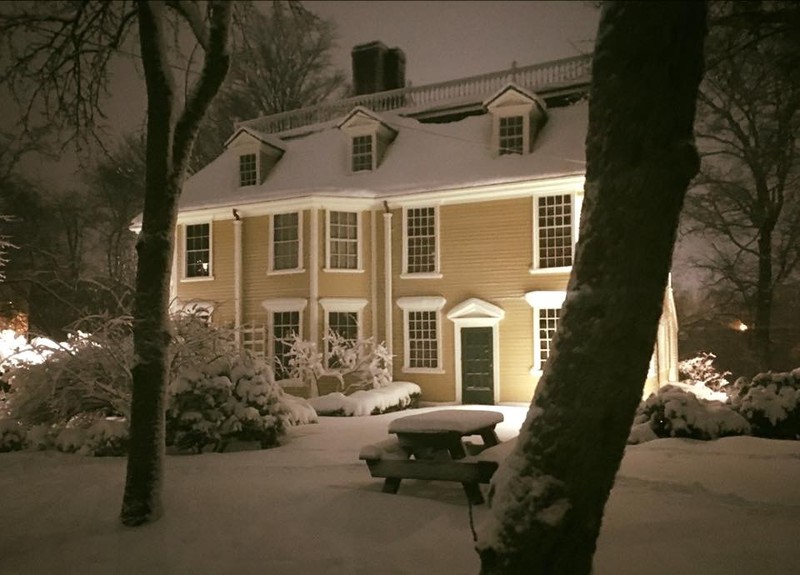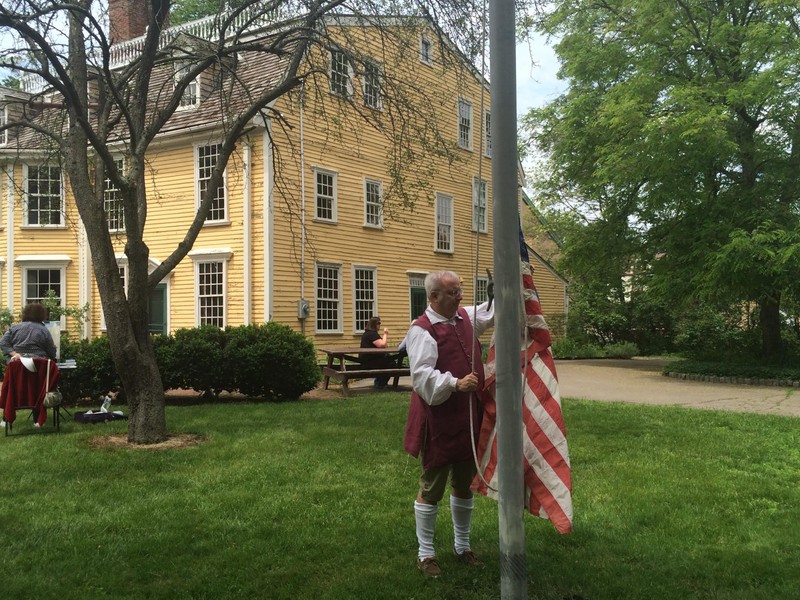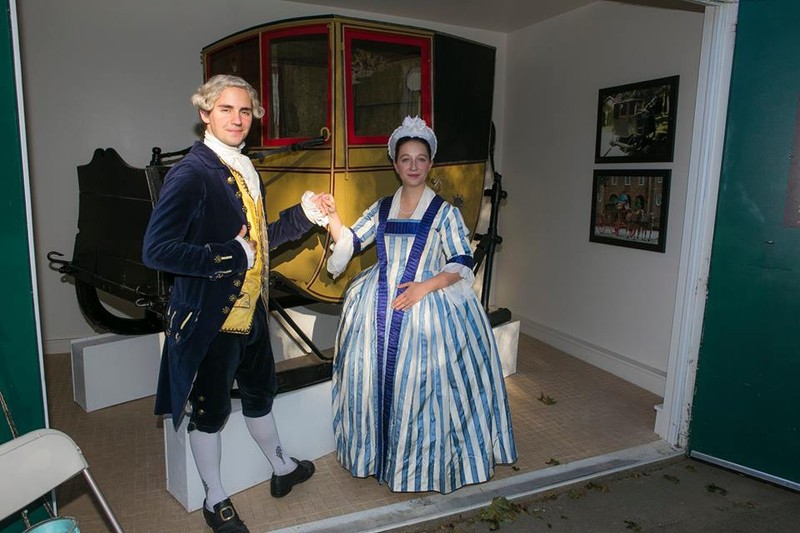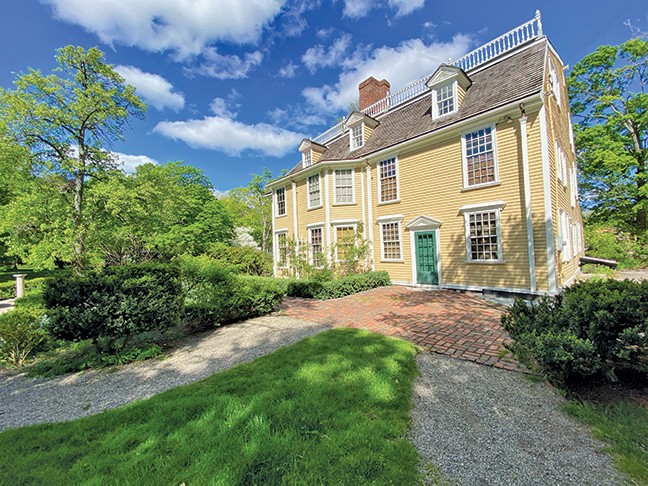Quincy Homestead
Introduction
Text-to-speech Audio
A captivating chapter of American history began c.1635 on the site of the stately Dorothy Quincy Homestead. The original estate covered several hundred acres extending from its current location to Quincy Bay. In the 17th and 18th centuries, the Homestead was acclaimed the grandest estate in Quincy. Famous Quincy family members include Dorothy Quincy Hancock, the first First Lady of Massachusetts; and President John Quincy Adams, whose maternal great-grandfather was Colonel John Quincy, for whom the town of Quincy was named.
Images
Dorothy Quincy Homestead asleep at winter

Flag raising at the Dorothy Quincy homestead

John and Dorothy Quincy Hancock re-enactors during a homestead celebration

Colonial Women at Dorothy Quincy Homestead
.jpg)
Dorothy Quincy Homestead

Backstory and Context
Text-to-speech Audio
Designated a National Historic Landmark in 2005, and listed in the National Register of Historic Places, the Dorothy Quincy Homestead is known for its role in early American history, for its architecture and its association with the Edmund Quincy family, one of the early families of Massachusetts whose members played a substantial role in the political and social life of the Commonwealth and who placed their imprint on the property for five generations (c.1635-1763).
Edmund Quincy I, the Puritan colonist, settled in Old Braintree (now Quincy) in the 1630s and established the Quincy Homestead. The current mansion’s construction began (c.1680) under Edmund Quincy II who built his new house near the Furnace Brook. The Homestead represents the evolution of over 300 years of American architecture combining Colonial, Georgian and Victorian design.
Saved from urban development in 1904, The National Society of The Colonial Dames of America in The Commonwealth of Massachusetts restored the house as a museum and transferred ownership to the Commonwealth which leased the house back to be cared for by the Dames.
Cite This Entry
Hawley, Carrie, Adams NHP, and Bob Damon. "Quincy Homestead." Clio: Your Guide to History. June 29, 2021. Accessed April 28, 2025. https://theclio.com/tour/1534/10

